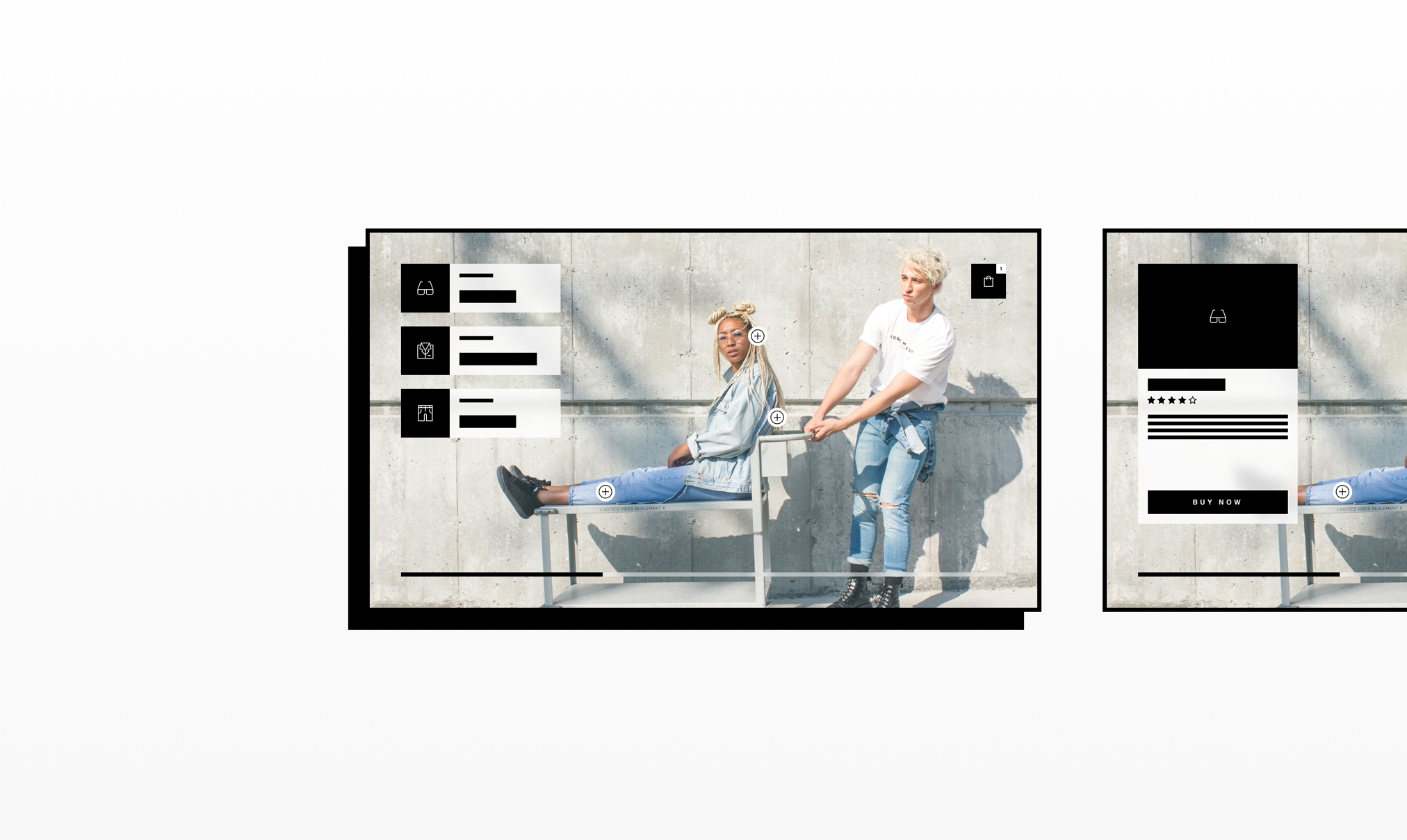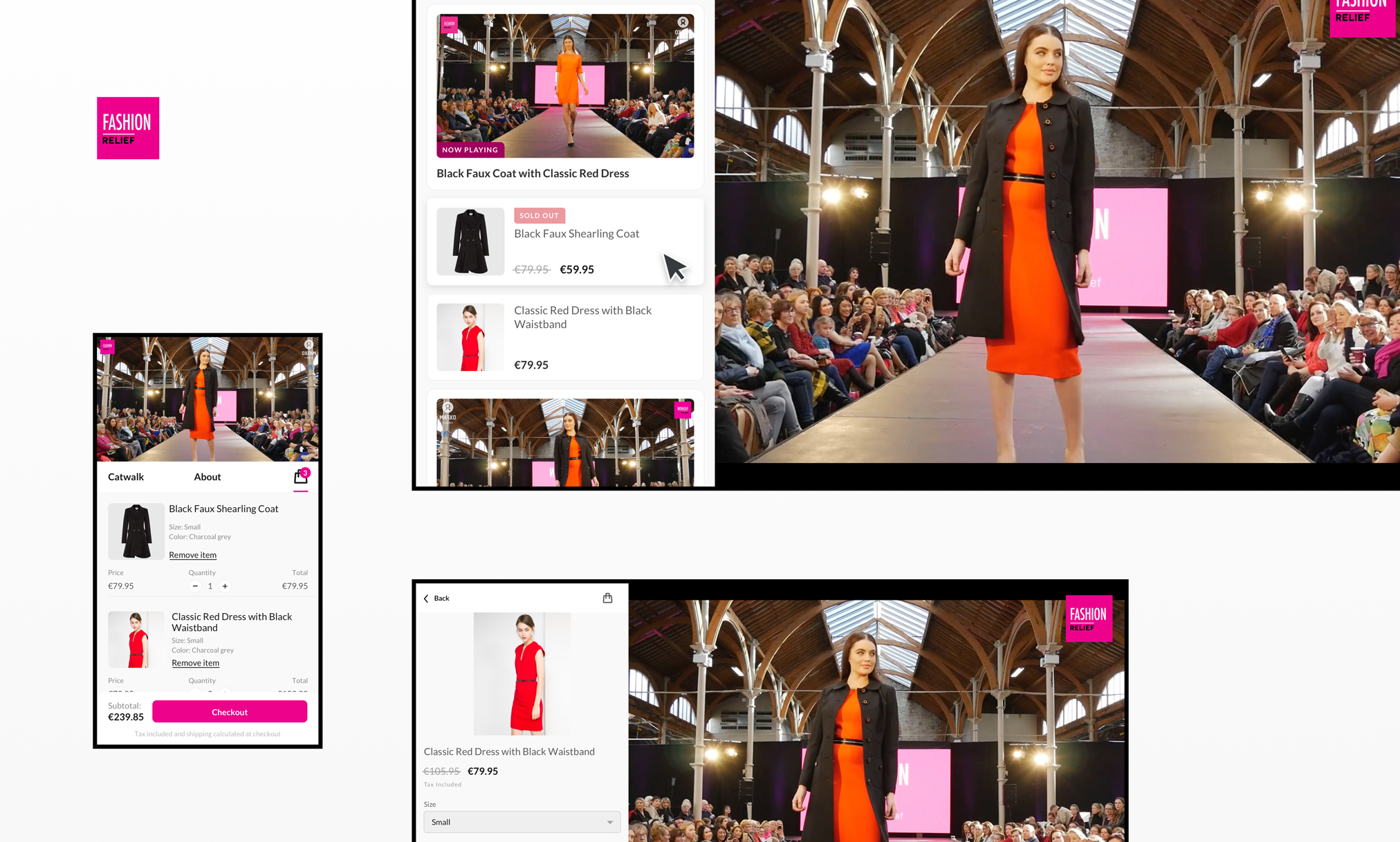Shoppable Video: The Beginner’s Guide for Retail Brands
The beginner’s guide to shoppable video for retail brands.
Video consumption is increasing, which means many retail brands are focusing their marketing strategy on video advertising. A study from HubSpot found that 83% of video marketers say that video has helped them generate leads, while 84% of people say that a brand’s video convinced them to buy a product or service. Now, thanks to the innovation of shoppable video, retail brands can engage with their audiences and increase sales like never before.
What is shoppable video and how does it work?
Shoppable videos create an interactive experience for viewers. With embedded links, viewers can click or purchase products instantly without changing screens or windows. The experiences are conveyed through graphic video overlays that produce additional context to viewers. This means that retail brands can meet today’s consumers’ shopping habits by reducing the time and actions it takes to make a purchase – therefore, increasing sales and lead generation.

How to create a great shoppable video
It is important that the videos retail brands publish are engaging and deliver value. By creating great shoppable videos, retail brands can increase traffic and generate more revenue.
The Ediflo video content management system from Axonista allows you to curate multiple video collections for users to enjoy across all screens. Ediflo makes video shoppable which enables you to provide additional context to what your viewers are watching. You can include “buy buttons”, calls to action, email sign-ups and more in your videos.
Create a seamless shopping experience with shoppable videos
One of the reasons that many retail brands are using shoppable videos is because it provides a fast and convenient way for consumers to shop. By creating a seamless shopping experience for your customers, you can increase your revenue and level of engagement. Shoppable videos remove the time a customer would take to browse for a product as it allows them to click and purchase what they see without leaving the video.
A great example of a brand that has used shoppable video to create a seamless shopping experience is charity retailer Oxfam. The restrictions put in place for COVID-19 meant that Oxfam could not have their annual Fashion Relief event. However, partnering with Axonista allowed them to turn their fashion show into a shoppable video event to reach a larger online audience. Built on the Ediflo video CMS platform, Fashion Relief TV is an always-on shoppable video platform that allows viewers to click and buy from any device.

Fashion Relief TV was a great success for Oxfam as they sold 60% of stock in the first two hours of the showing going live. In just three weeks, they surpassed sales targets and delivered a 25% conversion rate to basket.
“…We are delighted to be partnering with Axonista to bring Fashion Relief straight to an online audience.” Lorraine Keane, Fashion Relief founder.
Create shoppable videos through storytelling
Storytelling allows you to create stories that convey your brand’s product and engage your audience. Through storytelling, you can show different aspects of your brand, create shoppable videos that keep your audiences entertained, and show your brands’ personality.
Ted Baker has been great at using shoppable videos to tell different stories to their audiences and increase engagement. In 2016 and 2017, they partnered with Guy Ritchie to create two shoppable videos. Mission Impeccable (2016) was a three-minute spy story that allowed most of the characters’ clothes to be clickable and shoppable. Keeping up with the Bakers (2017) was a 360-degree shoppable video that tells the story of the Baker family moving into a new house.
Ted Baker used shoppable videos to reduce the steps that viewers take to buy a product by allowing them to easily add each item they clicked in the video into their basket. In addition to this, viewers were able to watch the Bakers’ story and explore the neighborhood.
Ted Baker saw great results from using shoppable videos as it was reported that they sold $70,000 worth of clothes in the first week.
So, if you’re considering how to harness shoppable video for your retail brand, here are three key recommendations –
- Translate the real-world excitement into an online channel like Oxfam and Fashion Relief.
- Invest in great storytelling, that will resonate with your target consumer (as Ted Baker did with Guy Ritchie.
- Ensure a high-quality experience across all devices using smart overlays and design-centred user experience.
It is an exciting time to be using shoppable video as part of your marketing strategy. What do you think?
To learn more about how shopping brands are using shoppable video, check out our Ediflo for Shopping page.


